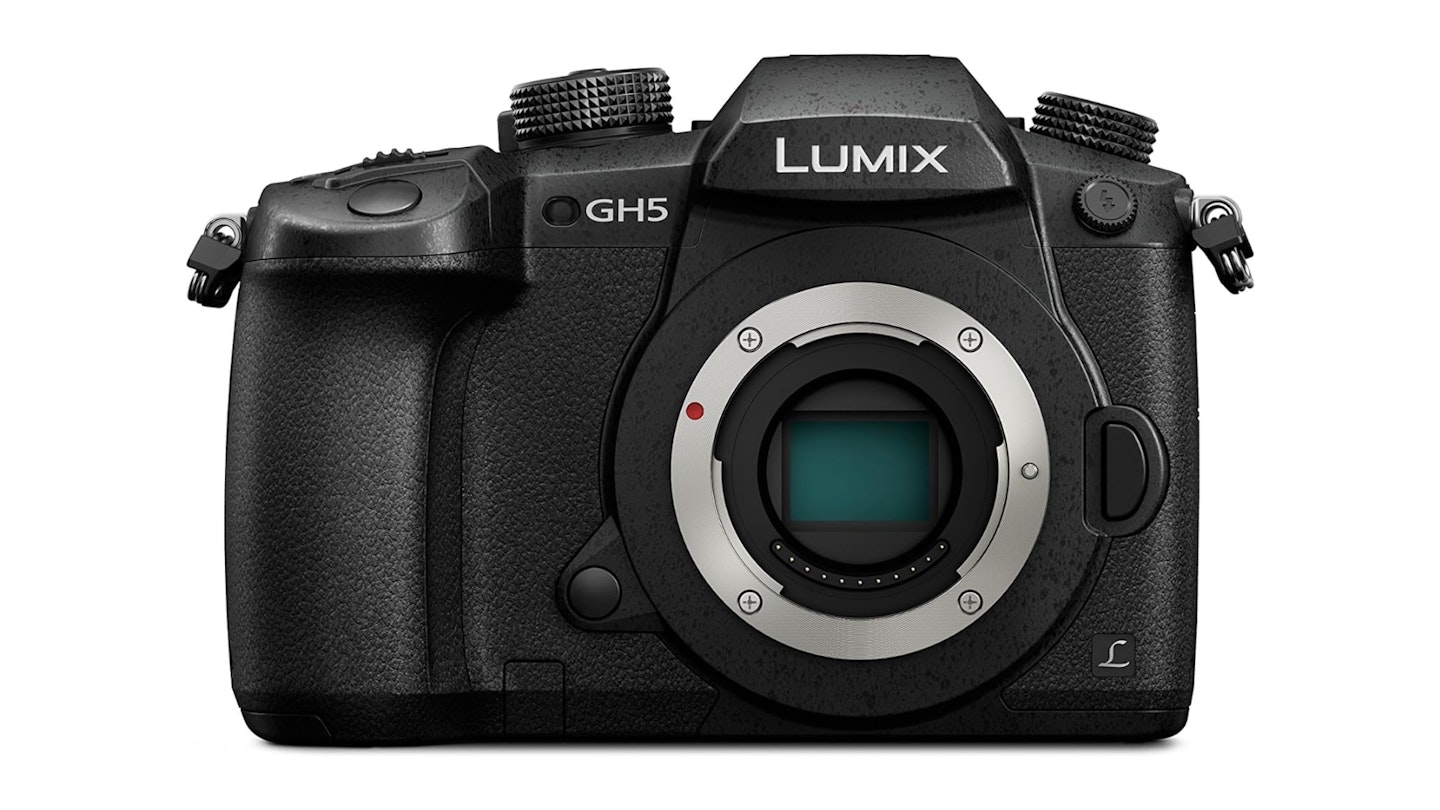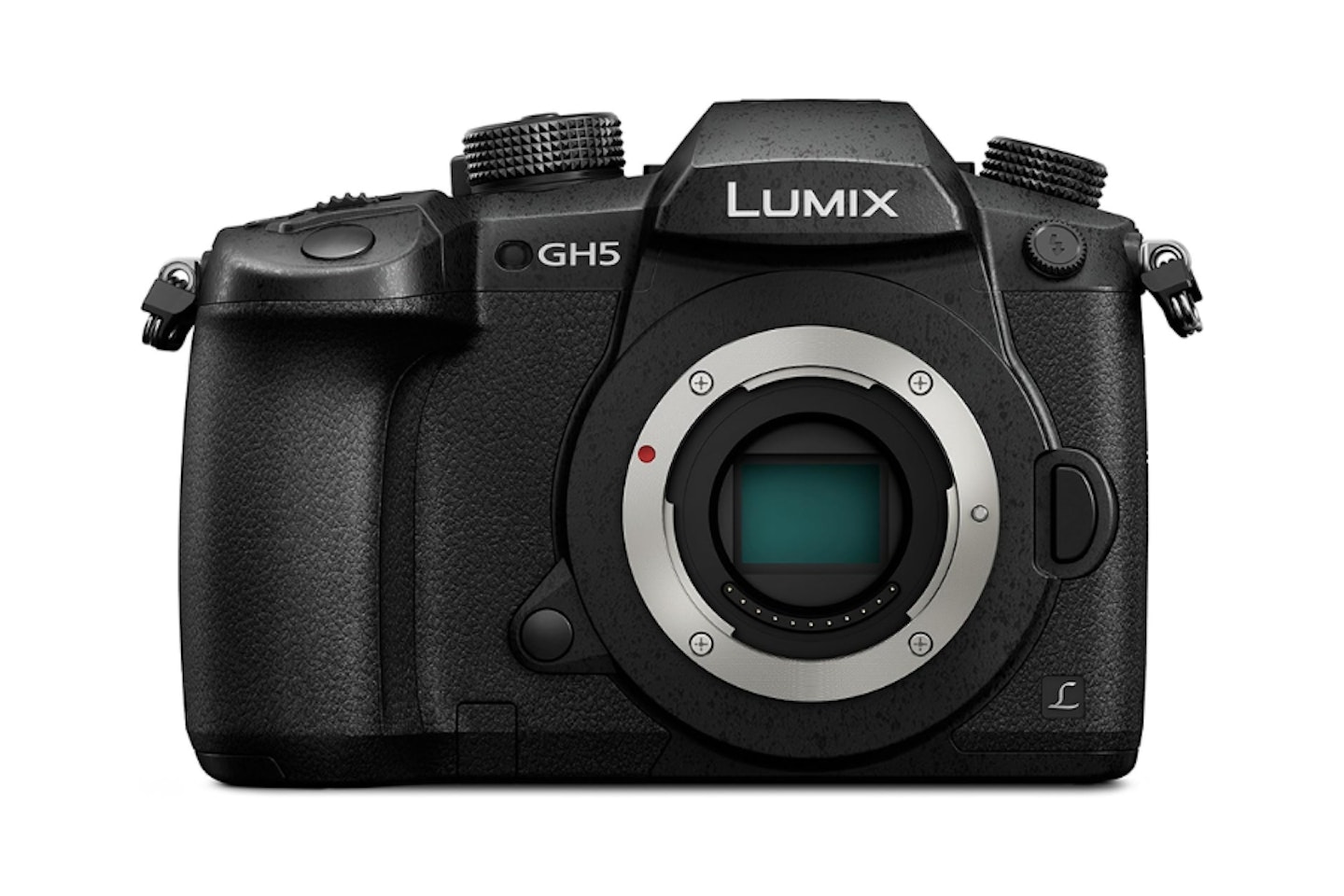Verdict: The Panasonic Lumix GH5 is a brilliant, feature-rich camera, worthy of being classed as one of the best cameras in this price range. The quality is outstanding; the sharpness and dynamic range, and the vibrancy in the colours are excellent. The addition of internal 4:2:2 10-bit and V-log (optional upgrade – £81), as well as unlimited recording time and shooting uncropped 4K are all amazing.
The 6K photo modes, robust design and fast AF are all huge plus points and far outweigh the below-par ISO performance or the misplaced thumb-stick. However, the true strength of this Lumix camera lies in its ability to shoot outstanding video. If you are looking for a true stills camera with exceptional video capability, on a relatively small budget, then this is the camera for you.
Panasonic boasts an impressive list of landmark firsts. Its DMC-L10 was the first camera to feature a Live View LCD, while the Lumix G1 was both the first interchangeable lens mirrorless camera (CSC) and changed the optical viewfinder for an electronic one. Panasonic also created the astounding FZ1000, the first compact to shoot full 4K video.
The highly-rated Lumix cameras are now better than ever, with the higher-end Micro Four Thirds models still breaking new ground. The latest addition is the GH5, successor to the applauded GH4, a true stills and video hybrid with a big reputation to live up to. First impressions, however, are that the GH5 is one of the best all-round cameras to hit the market, as the feature-heavy spec will have mass appeal and it has improved in almost every area over its predecessor. Let’s take a closer look...
THE PANASONIC LUMIX GH5 FEATURES A 20.3MP RESOLUTION AND 3.2IN FREE-ANGLE LCD
The 20.3MP Live MOS sensor is easily capable of standing alongside higher megapixel rivals, with the Venus Engine 10 offering up some seriously impressive results. The lack of an optical low-pass filter results in brilliant clarity and sharpness. The colours are vibrant and the dynamic range is very impressive, even against top-level DSLRs such as the Canon 5D MkIV.
The improved 3.2in free-angle LCD displays at 1620k-dot, and the touch functionality is very responsive. The OLED Live View EVF now boasts a mind-blowing 3680k-dot (over the GH4’s 2359k), offering a magnification of 0.76x (53mm equivalent) and 100% field-of-view coverage. While lag hasn’t been totally eliminated, it is barely noticeable.
The focus system is a 225-point contrast-detect type. The lack of phase-detect isn’t a problem though – the updated Depth from Defocus (DFD) technology makes the autofocus incredibly snappy (up to 0.05sec) and impressively accurate for stills. However, we did notice that with 4K video the AF seems to lag somewhat, which will hopefully be addressed in a future firmware update.
Panasonic’s familiar 4K features, such as Focus Stacking, Post Focus and 4K Burst, are all present. The addition of a 6K mode allows you to use the same amazing range of tools but save the stills at 18MP, 10MP more than the 4K 8MP output. The GH5 also includes 5-axis in-built image stabilisation, which works with the lens’ in-built Dual 2 IS, giving you up to 5 stops to assist with handheld shooting.
The Lumix excels at video, as it’s packed with high-tech features. Unlimited UHD 4K recording is extremely welcome. So too is the 180fps capability of the 1080p HD mode, making 6x slow motion capture a beautiful reality. 4K no longer crops into the sensor like it did on the previous model, meaning a wider field-of-view at the same focal length. Currently it can record 4:2:2 10-bit footage at 30p, though a proposed firmware upgrade (this summer) will allow 60p recording, meaning you have a lot more scope for colour grading in post-production. The same firmware update will also bring 6K anamorphic video mode (4:3) shooting.
Panasonic has released a V-log update for serious videographers, allowing you to load LUTs (Look Up Tables) to the camera, though this is a paid-for upgrade. The HDMI port is now full-size, so linking to external monitors is easier than ever. Other notable additions include the Vector Scope and Waveform Monitor readouts, as well as a pre-configurable rack focus mode, all of which are a real coup in an enthusiast body and make the GH5 hugely appealing to prosumer movie makers.
Handling & build
If you’re familiar with the GH4 then there won’t be many surprises here. The GH5’s layout is very reminiscent to that of its predecessor, though there is now a thumb-stick below the focus switch and the dedicated recording button has been moved to the top-plate. Both work well, though I found the thumb-stick to be too far out of reach for my comfort.
The inclusion of these, as well as the full-size HDMI socket and dual SD card slots, has resulted in a 13% increase in size, with the GH5 weighing in at 725g. The added weight doesn’t affect the feel, however, with this camera being super comfortable to use handheld. The magnesium alloy body is extremely rugged, with Panasonic including weather-sealing on every joint, dial and button. The robust nature of the GH5 doesn’t stop there though, as the shutter itself is rated for 200k shots, which should be more than enough for even the most prolific shooters.
Performance
Having had so many tweaks and improvements, the GH5 handles exceptionally well in the field. The contrast-type DPD autofocus does an exceptional job, and has clearly benefited from an overhaul. Similarly, the tracking mode makes short work of keeping up with moving subjects, though it did struggle with some very fast-moving objects in testing.
The stills half of the GH5 is a big step-up from the 16.5MP GH4. The increased sensor resolution, impressive sharpness and the beautiful, natural colour rendition are all impressive and really come to life through the 3680k-dot EVF. The button placement is well thought-out, with only the position of the thumb-stick being slightly awkward. Adding the dedicated video button to the top-plate, instead of having it on the rear of the camera, gives it a very intuitive feel, almost like having one shutter for movie and one for stills.
The autofocus does a good job in low light conditions, working comfortably from the light of a smartphone, and the intuitive button placement means operation in the dark is easy. If you’re not familiar with the Lumix range, the touchscreen will let you achieve near enough anything you need, from adjusting settings (through the Q menu) to taking the shot, and it’s amazingly responsive.
The paired Leica 12-60mm f/2.8-4 lens offers a beautiful level of detail, with its own IS working in conjunction with the camera’s in-built Dual 2 IS to provide up to 5 stops of compensation. The in-lens IS is particularly useful for longer focal lengths, when sensor-shift IS is less effective. Equally impressive is the way it resolves its bokeh (the out-of-focus area) with the 9 diaphragm blades to create near-circular blur. Though the GH5 comes with three possible kit lenses, this 320g, 24-120mm equivalent is an exceptional partner-in-crime for this camera.
The 4K and 6K capture modes are both extremely impressive, and the clarity at which you can take images from a 6K burst and save at 18MP is, frankly, astonishing. It is even able to keep up with high-speed panning, thanks to the continuous autofocus setting. For those that like to remain a bit more traditional, however, a claimed 12fps (we only managed a maximum of 9fps) in burst mode should supply more than enough shooting speed.
Post Focus is a brilliant feature, giving you the ability to change your focal point after the image is taken. It also allows focus stacking for an ultra-wide depth-of-field. However, a tripod is recommended for the latter, since the end image is comprised of several shots and slight movements will cause misalignment.
One slight complaint is the noise handling, which doesn’t seem to have come on that far from the GH4. Degradation becomes noticeable at ISO 6400, and finer details start disappearing. This isn’t a major gripe, though it would have been great to see the camera excel to its maximum of 12,800. This issue also affects the video modes, which are otherwise outstanding.
Pros
Image quality
6K Photo mode
Handling
Construction
Menu features
Weather-sealing
Touchscreen
Cons
Fewer frames-per-second than advertised
ISO limitation
4K video focusing
In love with mirrorless cameras? So are we. We've rounded up 10 of the best mirrorless cameras. Check them out now!
Specification
Lens: Leica DG Vario-Elmarit 12-60mm f/2.8-4 ASPH Power O.I.S
Effective resolution: 20.3MP
Sensor: 17.3x13mm Live MOS
Processor: Venus Engine
LCD: 3.2in 1620k-dot free-angle touchscreen
Shutter: 1/16,000-60sec
Autofocus: 225-point DFD contrast-detect
ISO: 200-25,600 (expands to 100)
Shooting speed: 12fps
Video: 4K at 60fps, Full HD at 120fps
Pop-up flash: No
Other features: 4K/6K Burst photo modes, time-lapse
Battery life: 410 shots
Card type: SD, SDHC, SDXC
Size (WxHxD): 139x98x87mm
Weight: 1045g



